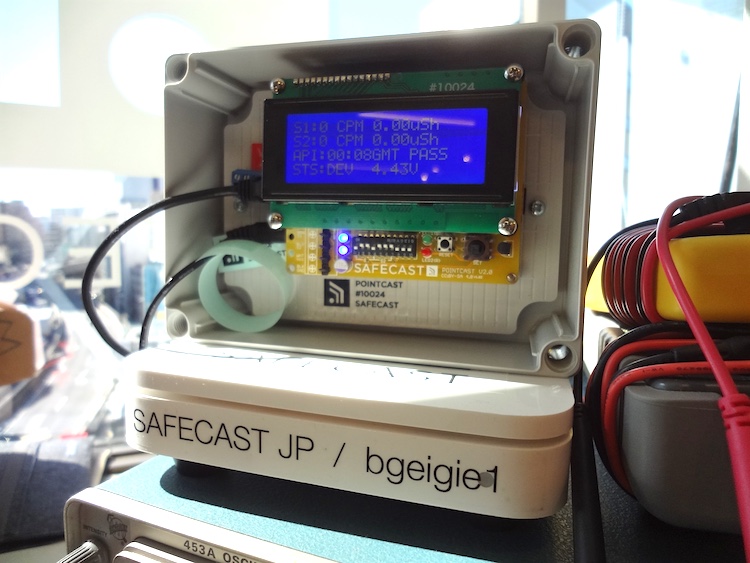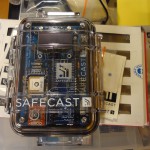Five years after Fukushima, Safecast tackles air quality
Published 1 March 2016 by Cherise Fong
Five full years after the catastrophic explosion of the Fukushima Daiichi nuclear reactor on March 11, 2011, Safecast, the grassroots collective behind the bGeigie DIY Geiger counter that championed citizen science and environmental monitoring, is busy prototyping new devices to measure air quality.
Tokyo, from our correspondent (text and images)
Friday at noon, on the 8th floor of a building overlooking Shibuya in Tokyo, three original visionaries of Safecast—Sean Bonner, Pieter Franken and Ray Ozzie—sit around a table covered in circuit boards, enclosures, prototypes and laptops. This time, they have come together to discuss the latest developments in a series of prototypes to measure air quality.

Over the past five years, the bGeigie, and especially the ultra-portable Nano, Safecast’s DIY Geiger counter kits designed and developed during the state of emergency following the Fukushima disaster, were many people’s point of entry into citizen science, both within and well beyond the Japanese archipelago. These bento-sized boxes allowed ordinary individuals to measure levels of nuclear radiation on a very local scale, all over the world. And the results of these measurements are constantly updated on Safecast’s crowdsourced map. In addition to the Pointcast global network of fixed sensors, the bGeigie’s public and open source success through research, workshops, education and individual kit sales (1,000 distributed worldwide, according to Sean Bonner) continue to support the Safecast project.

Since Fukushima, environmental awareness has also increased, especially following the recent natural gas leak at Porter Ranch near Los Angeles in the U.S. Now more than ever, people want to know what’s inside the air they’re breathing every day.
Sean Bonner, global director of Safecast, observes this general anxiety: “Everybody I’ve talked to thinks that air quality is the most important thing for them in their city. It’s very different from radiation, where even though people thought it impacted them, it was a problem from over there. With air quality, people don’t think of it as a problem from someplace else, they think of it as their problem… It’s a very personal problem for people across the board.”
Safecast Air
Hence the Safecast Air project to monitor air quality. But what exactly is air pollution? The pollutant most talked about in the media is particulate matter (PM), the stuff you can see. Then there are the natural gas leaks, with methane being the most dangerous greenhouse gas in the short-term. So people’s most common demand is to be able to measure the levels of PM and methane.
After nearly two years of trial and error, the Safecast Air team has developed several different prototypes, each with a specific configuration of sensors. The first was huge, and measured three levels of particulates and three gases. The second, a quarter of the size of the first, is portable enough to be installed in various places, and measures PM10, PM2.5, PM1.0, methane, ozone and nitrogen dioxide, with the possibility to change sensors. The third, half the size of the second and completely mobile, is exclusively dedicated to measuring methane levels. About 15 of these beta prototypes are already deployed in California…
Sean Bonner demos the second Safecast Air prototype:
Sean already has a list of about 10 different organizations waiting to receive between 10 and 100 Air devices as soon as they’re ready. But the small team, led by Sean, a fellow of the Shuttleworth Foundation, and including two contracted engineers at IO Rodeo in California, is still experimenting with different configurations before they decide which one to replicate.
As for the kit, it will cost more than the bGeigie, due to the number of sensors, however, its price has not yet been fixed. In any case, given the bGeigie Nano’s already proven success in Japan and abroad, Safecast Air certainly has the potential to take off on a global scale.

